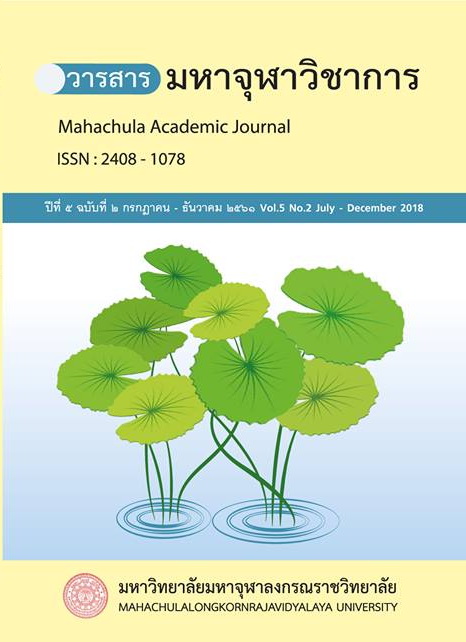รูปแบบการจัดการศึกษาแบบเรียนรวมของนักเรียนที่มีความบกพร่องทางการเรียนรู้ในสถานศึกษาสังกัดสำนักงานคณะกรรมการการศึึกษาขั้นพื้นฐาน
Main Article Content
บทคัดย่อ
การวิจัยครั้งนี้มีวัตถุประสงค์เพื่อ ๑) วิเคราะห์องค์ประกอบการจัดการศึกษาแบบเรียนรวมของนักเรียนที่มีความบกพร่องทางการเรียนรู้ในสถานศึกษาสังกัดสำนักงานคณะกรรมการการศึกษาขั้นพื้นฐาน ๒) สร้างรูปแบบการจัดการศึกษาแบบเรียนรวมของนักเรียนที่มีความบกพร่องทางการเรียนรู้ในสถานศึกษาสังกัดสำนักงานคณะกรรมการการศึกษาขั้นพื้นฐาน และ ๓) ประเมินรูปแบบการจัดการศึกษาแบบเรียนรวมของนักเรียนที่มีความบกพร่องทางการเรียนรู้ในสถานศึกษาสังกัดสำนักงานคณะกรรมการการศึกษาขั้นพื้นฐาน วิธีการดำเนินการดำเนินการวิจัยเป็นผสานวิธี (Mix Methods Research ) การวิจัยเชิงปริมาณและคุณภาพ ผลการวิจัยพบว่า การวิเคราะห์องค์ประกอบการจัดการศึกษาแบบเรียนรวมของนักเรียนที่มีความบกพร่องทางการเรียนรู้ ได้ ๔ องค์ประกอบ ได้แก่ ๑) การบริหารจัดการ ๒)การจัดการสภาพแวดล้อม ๓)การจัดการเรียนรู้ ๔)การประสานความร่วมมือ รูปแบบการจัดการศึกษาแบบเรียนรวมของนักเรียนที่มีความบกพร่องทางการเรียนรู้ ประกอบด้วย ๔ ส่วน ได้แก่ ส่วนที่ ๑ ส่วนนำ ส่วนที่ ๒ ส่วนเนื้อหาและแนวทางการดำเนินงาน ส่วนที่ ๓ ส่วนกระบวนการพัฒนาการจัดการศึกษาแบบเรียนรวมของนักเรียนที่มีความบกพร่องทางการเรียนรู้ และส่วนที่ ๔ ส่วนเงื่อนไขความสำเร็จ การประเมินรูปแบบการจัดการศึกษาแบบเรียนรวมของนักเรียนที่มีความบกพร่องทางการเรียนรู้ จำนวน ๔ ด้าน ได้แก่ ๑) ด้านความถูกต้อง ๒) ด้านความเหมาะสม ๓) ด้านความเป็นไปได้ และ ๔) ด้านความเป็นประโยชน์ อยู่ในระดับมากที่สุด


